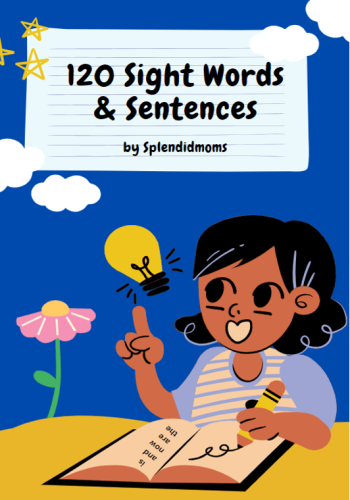Sight words
Disclosure: This post contains affiliate links, which means we may earn a small commission at no extra cost to you if you make a purchase. Thank you for supporting our work!
Sight words are common words that children are encouraged to recognize instantly by sight, rather than sounding them out. These words often do not follow typical phonetic rules, making them difficult to decode using regular phonics strategies. Because sight words frequently appear in texts, teaching children to recognize them by sight helps improve their reading fluency and comprehension.
In this post, we’ll talk about sight words you can begin with, and a helpful tool to make practice time simple and fun!
Why Sight Words Are Important for New Readers:
1. Improves Fluency: When a child can quickly recognize sight words, they spend less time decoding individual words and can focus more on understanding the text as a whole.
2. Boosts Confidence: Being able to read a significant portion of text (often made up of sight words) boosts a child’s confidence in their reading abilities.
3. Facilitates Comprehension: By recognizing sight words instantly, readers can focus more on understanding the meaning of the text rather than getting stuck on specific words.
4. Supports Phonetic Learning: Sight words often complement phonetic learning by helping children handle exceptions to phonetic rules (e.g., “the,” “who,” “does”).
**The free download can be found towards the END of this post. Just look for and click on the purple, download button.
How to Teach Sight Words:
1. Introduce Words Gradually: Begin with a small list of common words and build up. Ensure mastery of one set before moving on to another.
2. Use Flashcards: Show the word on a card and encourage the child to say it aloud. Practice this regularly to reinforce recognition.
3. Repetition: Repetition is key when learning sight words. Use daily activities to reinforce them in real contexts (reading books, labeling objects).
4. Engaging Activities:
– Word Hunts: Have children search for specific sight words in books or on a page.
– Games: Bingo, memory match, or online sight word games are great ways to practice in a fun way.
– Writing Practice: Encourage children to write sight words, reinforcing both spelling and recognition.
5. Use of Context: When reading, point out sight words within the context of a sentence or story, helping children connect words with meaning.
6. Use Multi-sensory Approaches: Children can trace sight words in sand, write them in the air, or create them using playdough to engage multiple senses.
Make Learning Fun with Flash Cards
Want a ready-to-use solution that makes sight word learning stress-free?
✅ We highly recommend the
Skillmatics Flash Cards – 500 Sight Words
These flash cards cover 500 essential words from the Dolch and Fry word lists—perfect for Preschool, Kindergarten, 1st to 3rd Grade.
🔹 Includes 6 unique learning games
🔹 Covers high-frequency words for strong reading fluency
🔹 Great for visual learners and at-home practice
🎉 A wonderful addition to your daily learning routine!
👉 Click here to view the Skillmatics Sight Words Flash Cards
Tips for Teaching Sight Words:
– Be Patient: Mastery of sight words takes time, and children need consistent practice.
– Positive Reinforcement: Celebrate successes, no matter how small, to keep children motivated.
– Tailor to the Child’s Pace: Every child learns at their own speed, so adjust the pace of introducing new words accordingly.
By building a solid foundation of sight words, children can progress into fluent readers with improved comprehension.
In the following book 120 sight words are divided into 12 sets with 10 sight words in each set.
Sentences are build using CVC/3 letter words so that kids can easily practice reading sight words.
Here is how the book looks from inside-
First 120 Sight Words
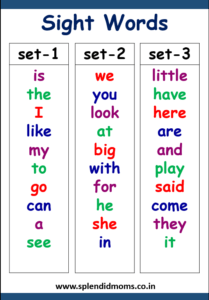
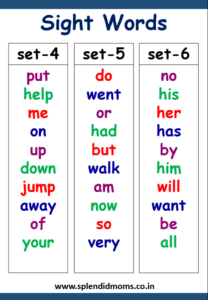
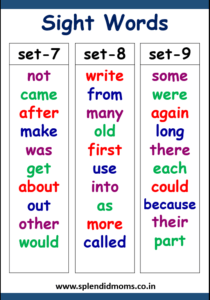
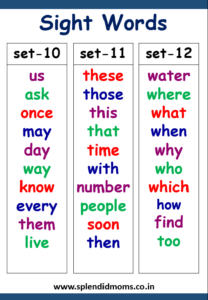
Sight Words With Sentences
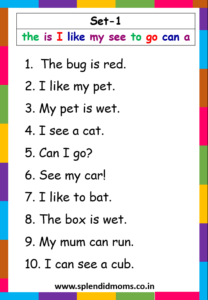
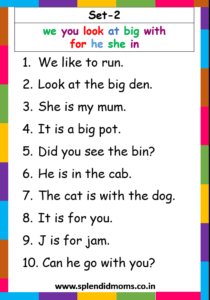
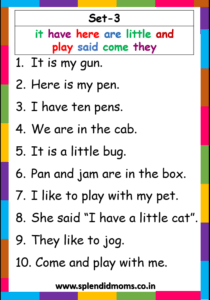
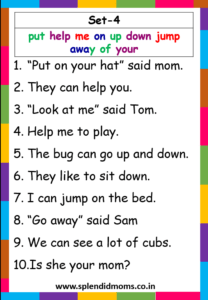
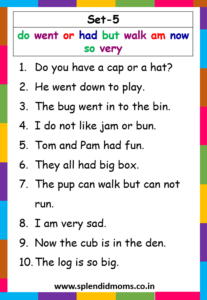
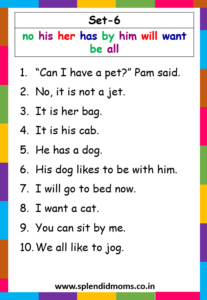
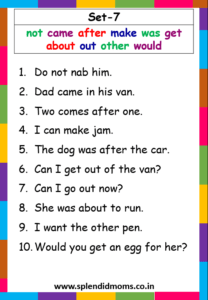
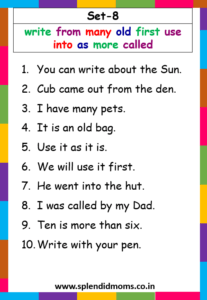
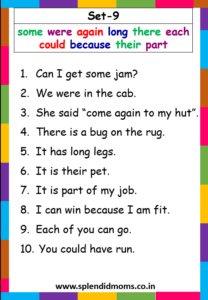
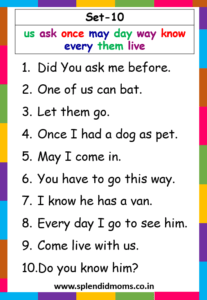
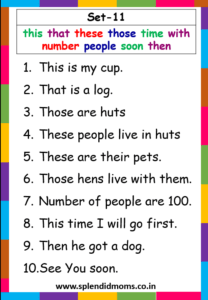
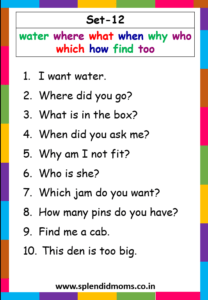
By incorporating sight words into your child’s learning routine, you’ll set them on the path to becoming confident, fluent readers. Enjoy your free resource and happy reading!
Feel free to share this post with other parents and educators who may benefit from this free sight words PDF. Together, we can make reading fun and accessible for all young learners!

